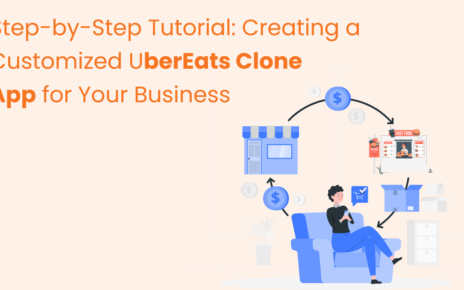Recruitment is no longer the slow, manual process it once was. In today’s fast-paced business world, companies are looking for smarter ways to attract, evaluate, and hire talent. The answer lies in technology, particularly automation and artificial intelligence (AI). These tools are helping organizations save time, reduce costs, and make better hiring decisions.
This blog explores how automation is changing the recruitment landscape, its benefits, and how you can implement it effectively in your organization.
Why Companies Are Turning to Automation
Hiring the proper talent has always been a challenge. Sorting through hundreds of resumes, scheduling interviews, and following up with candidates are all time-consuming tasks. Automation simplifies these processes and allows recruiters to focus on what truly matters—building relationships and finding the best fit for their teams.
Here’s why automation is gaining traction:
1. Faster Processes
Automated tools can screen thousands of applications in seconds. They highlight the most relevant candidates based on skills and experience, dramatically reducing time-to-hire.
2. Reduced Human Bias
By standardizing evaluations, automation helps organizations minimize unconscious bias and promote diversity in hiring.
3. Improved Candidate Experience
Features like automated updates, chatbots for instant communication, and self-scheduling options make candidates feel valued and engaged throughout the process.
4. Cost Savings
Streamlining recruitment processes means fewer resources are spent on manual tasks, leading to significant cost reductions in the long run.
How Automation Works in Recruitment
To understand how automation fits into the hiring process, let’s look at the key stages it enhances:
1. Resume Screening
AI-powered tools scan resumes, extract key information, and rank applicants according to their suitability for the role.
2. Candidate Matching
Algorithms compare job requirements with candidate profiles, identifying the best matches based on data rather than subjective judgment.
3. Chatbots and Virtual Assistants
Chatbots answer candidate queries, conduct initial screenings, and even schedule interviews without human intervention.
4. Interview Scheduling
Automation platforms integrate with calendars to let candidates choose suitable interview slots, avoiding the usual back-and-forth emails.
5. Analytics and Insights
Recruitment dashboards track metrics like application drop-off rates, time-to-hire, and sourcing channel effectiveness, helping recruiters fine-tune their strategies.
Benefits for Recruiters and Candidates
1. Saves Time
By automating repetitive tasks, recruiters can focus on strategic activities such as talent branding and deep-diving into candidate interviews.
2. Enhances Objectivity
Automation ensures each applicant is evaluated using the same criteria, reducing inconsistencies and errors in decision-making.
3. Better Candidate Engagement
Automated updates and instant communication tools make candidates feel informed and respected, which is crucial for building a positive employer brand.
4. Scalable Hiring
Whether you’re hiring five people or five hundred, automation allows you to handle large applicant volumes effortlessly.
Addressing Common Concerns
- Will automation replace human recruiters?
No. While automation handles administrative tasks, human recruiters are still essential for assessing cultural fit, building relationships, and making final hiring decisions.
- What about bias in AI systems?
There are concerns that AI systems can inherit biases from historical hiring data. Organizations can mitigate this risk by regularly auditing their algorithms and using diverse, representative training datasets.
Implementing Automation in Your Hiring Process
- Evaluate Your Current Recruitment Workflow
Identify repetitive tasks that take up the most time and are prone to human error. These are prime candidates for automation. - Choose the Right Tools
There are numerous solutions on the market, ranging from applicant tracking systems (ATS) to AI-powered chatbots. Choose tools that align with your business size, industry, and budget. - Train Your Team
Recruiters should understand how the technology works and how to balance automation with human judgment. - Start Small
Pilot automation in one part of your hiring process—like screening resumes for a single role—and scale up once you see positive results. - Monitor and Optimize
Use analytics to track the impact of automation on key metrics like time-to-hire, candidate satisfaction, and diversity ratios. Adjust processes based on the insights you gain.
A Look into the Future
Automation in recruitment is evolving rapidly. Here are some trends to watch:
1. AI-Powered Video Interviews
AI tools can analyze facial expressions, voice tones, and word choices to provide additional insights into candidates.
2. Predictive Analytics
Algorithms are being developed to predict a candidate’s future job performance based on historical data.
3. Talent Rediscovery
AI can scan your existing database to find past applicants who may now be a good fit for new roles.
4. Bias Mitigation
Next-generation systems are being designed with built-in checks to detect and reduce bias in hiring.
Automation will continue to play a major role in making recruitment more efficient and inclusive. Companies that embrace these changes early will have a significant advantage in attracting top talent.
Final Thoughts
Recruitment isn’t just about filling vacancies—it’s about building strong, diverse teams that drive success. By leveraging automation, organizations can make smarter, faster, and fairer hiring decisions. The key is to use these tools as an enabler, not a replacement, for human insight and empathy.For companies ready to explore modern recruitment solutions, now is the right time to start integrating AI-based hiring into their processes. This approach not only enhances efficiency but also helps create a more inclusive and engaging experience for candidates.



